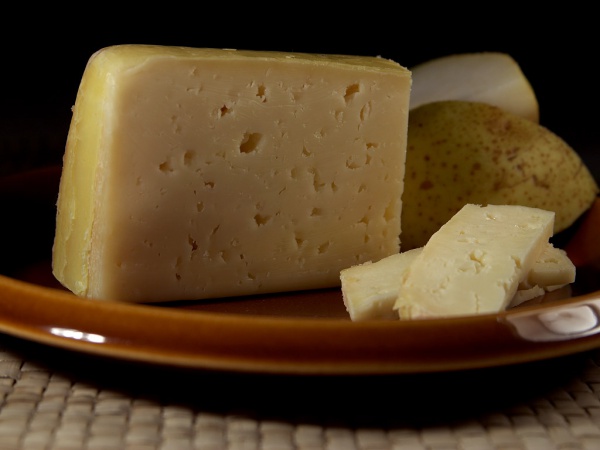Facts About Tilsit cheese
Tilsit cheese, also known as Tilsiter cheese, is a light yellow, semi-hard cheese with a rich history. It was first produced in the mid-19th century by Prussian-Swiss settlers from the Emmental valley, specifically by the Westphal family. They settled in Sovetsk, Russia—formerly known as Tilsit—along the Neman River in what was then East Prussia. Due to the non-availability of some original ingredients in their new home, the cheese developed unique characteristics, influenced by the local climate and colonized by various molds, yeasts, and bacteria. This resulted in Tilsit cheese having a more intense, full-bodied flavor. It was named after the town where it was created.
Tilsiter cheese features a medium-firm texture with irregular holes or cracks and is typically made from pasteurized cow's milk. The milk fat content can range from 30% to 60%. The cheese has a dark yellow rind and requires an additional two months of aging after production. Often, it's flavored with caraway seeds and peppercorns, making it a perfect match for hearty brown or rye breads and dark beers. Tilsit cheese is versatile and can be enjoyed in various ways: cubed in salads, melted in sauces, on potatoes, in flans, or on burgers.
Switzerland has been producing Tilsiter cheese since 1893, and Germany started its production in 1920 under the protected brand Holsteiner Tilsiter. Swiss Tilsiter comes in three main varieties: a mild version made from pasteurized milk (green label), a stronger-flavored one from fresh, unpasteurized milk (red label), and a cream-enriched version made from pasteurized milk with added cream (yellow label).
After World War II, when Tilsit became part of the Soviet Kaliningrad Oblast district, the production of Tilsiter-style cheeses continued in Switzerland and Germany. Today, Tilsit cheese is also made in Lithuania, Poland, Finland, Australia, and is available in the USA.

 France
France